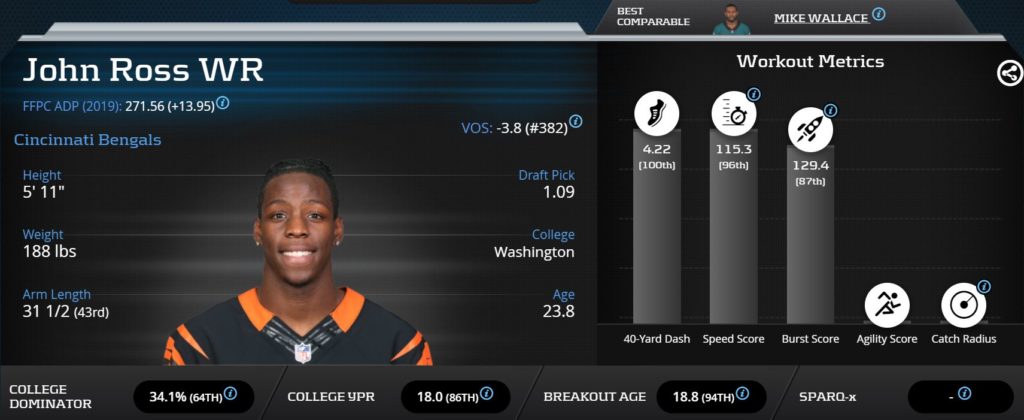
You’re going to see all of those slot monsters. Unlike the previous statistic, you’re not going to see a ton of deep-ball threats here. A player like Michael Thomas is the master of this category because he sees such a high volume of targets close to the line of scrimmage that allows him plenty of opportunities for yards after the catch. RACR is the ratio of a player’s receiving yards vs. Throw in the fact that he had just 627 receiving yards on the year, and you have a guy who represents why this statistic can’t be trusted by just taking the face value. He had only 153 yards after the catch on 54 catches, which is 2.83 yards after the catch per reception. I said he was in the top 10 in air yards, but he caught just over 51 percent of his passes. Let’s look at Samuel mentioned above for a second. You need to be looking at guys that are catching a good percentage, but they also have to do something more than be a jump-ball threat. He caught 63.1 percent of the balls thrown his way last year. Not only was he catching balls down the field, but he was also doing something with the ball once he got it.

Julio Jones led the league in air yards last year, and he was 13th in yards after the catch. The key to breaking down this metric is looking at their efficiency on that high volume of air yards. I can see that Mike Williams and Curtis Samuel were both in the top 10 for air yards which is great, but neither of them finished as even WR2s last year. That’s a simple way to see it, but that’s just to get a surface understanding of the statistic. Most people would see this category and assume that they should look at players with a high average depth of target and number of air yards. The guys we’re covering today may not be at the top of any of these individual metrics, but it’s more than likely that they performed well across the board. When a team has multiple that might fit that spot, you can use it to separate one from another. This is where you see who a team’s true number one receiver is. Players with more targets and a higher market share of their team’s air yards have a higher mark in this metric. Our final advanced stat of the day is Weighted Opportunity Ranking or WOPR. Players that operate close to the line of scrimmage but turn them into a lot of yards after the catch generally have a higher ratio in this area. This is when we have to factor Receiver Air Conversion Ratio or RACR. You run into players that are inefficient downfield threats that see their average target farther from the line of scrimmage, and they don’t always convert, which gives them more boom-or-bust opportunities.

Simple enough, right?ĭoes having a high volume of air yards automatically translate to a high level of production? No. Greater air yards equals greater opportunity. Generally, when a player has more air yards, they likely had more targets thrown their way. It gives you an idea of where players are receiving their average targets and how much opportunity they have to produce points in the world of fantasy football. Josh Hersmeyer of came up with the idea of tracking air yards in order to apply it to football analysis in 2016.


 0 kommentar(er)
0 kommentar(er)
